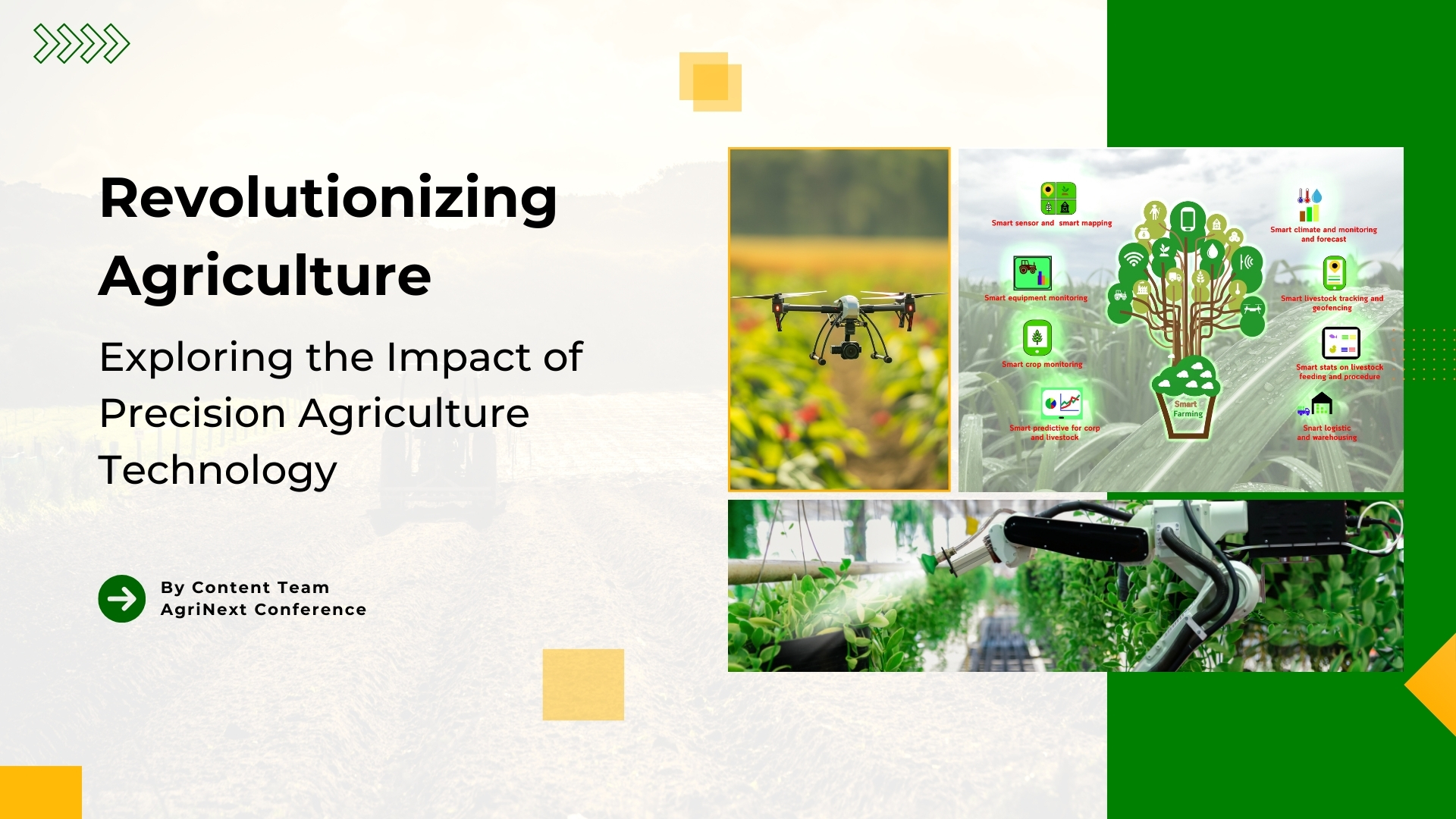
Explore the cutting-edge world of precision agriculture technology. In this post, we’ll explore how advancements in technology are revolutionizing traditional farming practices, improving efficiency, and sustainability in agriculture. Precision farming is a management strategy that focuses on the observation, measurement and response to variability in crops, fields, and animals using a number of various technologies.
Table of Contents
Precision agriculture started with GPS satellites in the 1950s and 60s, but it became popular among farmers in the 1980s and 90s. This happened because GPS equipment became cheaper and easier to use, and farmers could get satellite images to help them farm better.
Since then, the field of precision agriculture has continued to evolve and expand, with the introduction of new technologies such as sensors, drones, and autonomous vehicles, as well as advances in data management .
As reported by The World Bank in its article on climate smart agriculture, the world’s population is expected to reach 9 billion by 2050 ,hence more food (about 70%more) should be produced to meet its needs. Producing food for a fast growing population is one of the greatest challenges faced by humanity today.
Precision Agriculture capitalises advanced digital technologies and will play a significant role in the third modern farming revolution. It effectively minimizes inputs, labour, and time sustainably, maximizes productivity and profitability, ensures sustainability, and reduces environmental impact.
The precision agriculture market is estimated to touch $15.6 billion by 2030.
India’s precision agriculture market is experiencing a rapid growth trajectory and is projected to expand at over 10%to reach $99million by 2025.This growth is driven by increasingly concerned for food security
Highlighting the importance of such technological advancement in agriculture.
Precision agriculture, also known as smart farming or site specific crop management (SSCM), uses a variety of technologies to optimize farming practices. These technologies include:
GPS: A satellite-based navigation system
GIS: A geographical information system that collects and analyzes data on soil type, topography, and other factors that influence crop growth and yield
Remote sensing: A data-based technology that helps manage crops
Variable rate technology (VRT)
Soil sensors: soil sensors measure different properties of soil such as water content, nutrients and water potential.
Crop sensors: Crop sensors are used to evaluate crop conditions during the growing season.
Drones: Can create high-resolution maps of fields and are equipped with cameras
Satellite images: Provide information on crop status, weather forecasts, and environmental changes
Mobile apps: Can collect data about soil type, fertility, moisture content, and more .
Let us dive into some of the tools and technologies needed for precision agriculture.
Global Positioning System (GPS) for Precision agriculture.
The Global Positioning System (GPS) is a satellite-based navigation system that provides location and time information in all weather conditions, anywhere on or near the Earth. In precision agriculture, GPS is used to provide precise location information for mapping and navigation purposes.
Remote Sensing and Imaging: Remote sensing technologies, including drones and satellites, provide high-resolution imagery of crop health, soil moisture levels, and pest infestations. This data enables farmers to identify areas of concern and take targeted action.
Data Analytics and Machine Learning:
Advanced data analytics and machine learning algorithms analyze large datasets to identify patterns, optimize planting schedules, predict crop yields, and recommend agronomic practices tailored to specific field conditions.
Precision Irrigation Systems: Automated irrigation systems equipped with sensors and actuators deliver water precisely where and when it’s needed, reducing water waste and improving water-use efficiency.
Variable Rate Technology (VRT): VRT allows farmers to vary input applications, such as seed, fertilizer, and pesticides, based on the specific needs of different areas within a field. This targeted approach optimizes resource utilization and minimizes environmental impact.
Yield Monitors and Harvesters: Yield monitors installed on harvesters measure and record crop yields in real-time as they’re harvested. This data helps farmers evaluate field performance, identify yield variations, and make informed decisions for future cropping seasons.
Robotic and Autonomous Farming Equipment: Robotic and autonomous farming equipment, such as robotic weeders, drones for crop spraying, and autonomous tractors, automate repetitive tasks and perform precision operations with minimal human intervention.
Emission Reduction Technology:precision agriculture technologies can help reduce greenhouse gas emissions by allowing farmers to apply inputs more efficiently and precisely.
The significance of implementing Internet of Things (IoT) in precision agriculture lies in its ability to revolutionize farming practices. By seamlessly integrating sensors, connectivity, and data analytics, IoT empowers farmers with real-time insights into crop health, soil conditions, and environmental factors. This enables precise decision-making, optimized resource management, and increased productivity. IoT-driven solutions in agriculture promote sustainability by minimizing waste, conserving resources, and reducing environmental impact. Ultimately, IoT transforms traditional farming into a highly efficient and data-driven industry, ensuring food security and livelihood sustainability for future generations.
Chlorophyll meters
Some low cost and low technology tools are useful for small farms.One popular chlorophyll meter is the SPAD (Soil Plant Analysis Development) meter. It’s widely used in agriculture and research to assess chlorophyll content in plant leaves quickly and non-destructively.
LCC ( Leaf Color Chart) which is another tool used to assess leaf chlorophyll content in plants. It’s a simple, low-cost chart with color gradients that correlates with chlorophyll levels in leaves, providing a quick visual estimation of plant health and nutrient status.
These technologies enhance efficiency, reduce labour costs, and improve productivity on the farm.These are just a few examples of the many equipment and technologies available in precision agriculture. The adoption of these tools enables farmers to optimize production, increase efficiency, and promote sustainability in modern agriculture.
Advantages of Precision Agriculture
By using precision agriculture technologies and practices, farmers can target their inputs ( such as seeds, fertilizers, and pesticides) to specific areas of the field that need them the most, rather than applying them uniformly across the entire field.
This targeted approach can help farmers to save inputs and increase crop yields and quality. In addition, precision agriculture technologies can help farmers monitor and manage their crops more effectively, allowing them to respond to potential problems more effectively.
Farmers can utilize sensors and mapping tools to apply fertilizers precisely at the right rate and place. In addition, precision agriculture technologies can help farmers to optimize irrigation practices which can save water and energy.
Challenges:
Precision agriculture has a number of drawbacks. The primary drawback of precision agriculture is high initial investment and maintenance cost. Additionally ,precision agriculture requires farmers to possess technical skill and knowledge to operate technology and interpret the data they generate.
Further, the technology is ideal for large scale rather than small scale agriculture. Searching for the appropriate precision technology for small farms is a real challenge.
Data privacy is a top concern while implementing precision agriculture. Farmers are very protective of their information, such as land prices, yield data, etc. Loss or misuse of data can have a huge financial and emotional impact on farmers.
Strategies for Precision Agriculture Enhancement
Improving precision agriculture involves leveraging technology and data to optimize farming practices.
Integrate precision agriculture technologies with existing farm management software to streamline data collection, analysis, and decision-making processes.
Utilizing autonomous or semi-autonomous machinery for tasks like planting, harvesting, and spraying to improve efficiency and reduce labour costs.
Providing farmers with training and support to effectively use precision agriculture technologies and maximize their benefits.
Conclusion: Precision agriculture technology holds enormous potential to transform the agricultural industry, making farming more efficient, sustainable, and profitable. By embracing innovation and adopting these advanced techniques, farmers can meet the growing demand for food while minimizing environmental impact and preserving natural resources for future generations.
The upcoming AgriNext Awards Conference & Expo Promises to be a dynamic platform promoting discussions on innovation and technology in agriculture. With a focus on groundbreaking advancements shaping the future of farming, this event serves as a progression for industry leaders, researchers, and innovators to exchange ideas and insights. From precision farming and biotechnology to sustainable practices and digital solutions, the conference aims to spotlight transformative technologies driving efficiency, productivity, and sustainability in the agricultural sector.
Signup For AgriNext Conference Newsletter

